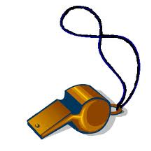 Sanzar are investigating a new concept – a so-called “referees bunker” – to be implemented in Vodacom Super Rugby in the near future to try and cut down on television match official decisions that are both controversial and cause an unnecessary delay in the game.
Sanzar are investigating a new concept – a so-called “referees bunker” – to be implemented in Vodacom Super Rugby in the near future to try and cut down on television match official decisions that are both controversial and cause an unnecessary delay in the game.
Sanzar refereeing boss Lyndon Bray confirmed that he was investigating the use of such a system – which has been implemented in Australia’s NRL Rugby League system, whereby the television match official was not at the game. He would rather be in a “bunker” where he would have access to at least nine different angles of play, and able to control which angles to look at if a decision was to be taken. The bunker would be situated off site, and connected via technology, taking away the emotion of fans in front of the TMO box.
After the shocking TMO decision that robbed the Vodacom Bulls of a try last weekend against the Rebels, and several other controversial decisions over the past few months, the sport’s guardians are looking for new and innovative ways to use technology better to aid the game and make a positive contribution.
“We all know that in today’s sport, technology is a critical aspect of the game & is going to remain so. None of us want to see errors when we use technology in sport & we all continue to work on the best technology to support the right decisions,” Bray said.
“Recently, I have been investigating options for how the TMO & / or referee receive the camera angles, in order to enhance the pictures they see & make decisions from. At the moment, we are fully under the control of the Broadcast feed & we are exploring options to help us “control the camera angles”. This can be done in a couple of different ways, but of course also comes at a potentially significant cost.
“The NRL in Sydney have just announced a new “centralised bunker” system – similar to that used already in the USA. I have been briefed on this concept & watching with interest the setting up of the bunker. Our challenge is that we cannot simply do this as per the NRL model, as our competition cuts across multiple territories & multiple broadcasters.”
Bray says the idea may be a good one, but practically implementing it is a challenge, and would need to have the buy in of all the nations that will compete in Super Rugby.
“We are exploring a “feed” into the TMO Box so that the TMO can control camera angles via a Laptop software package & this would allow us to improve 2 things: the time it takes to make a decision & the control of the replays being in the hands of the decision maker.
“These are not simple solutions, but recently I had a very healthy conversation with the Super Rugby Broadcasters & with strong collaboration I am confident we will improve the process & the technology for the TMO & / or referee on the field with 2016 in mind.”
The system can include innovative new rulings such as a captain’s challenge, lead to quicker charges for foul play and cut down time in rulings. In fact, in the NRL model, the average referral was cut from 90 seconds to 40 seconds.
It would also take away the role of television directors to focus on foul play they though significant, often ignoring their own team’s misdeeds to influence the referee.
And an added bonus of this for broadcasters is more time to sell ad revenue, as the overall game time would be down if decisions are ultimately made quicker.
However, it won’t be an easy road to get buy-in, but at least Sanzar are looking in the right direction.
Interestingly, Bray says in the case of the Bulls try, it was the referee who erred, as he left the television match official with little leeway through the question he posed when the try was scored.
“In terms of the Bulls “no try” on the weekend – the first challenge is for the referee to determine which question he is going to ask. This has significant implications on the scope available to the TMO (& referee, who is watching the replays). The first question is “try or no try” – this question is asked when the referee has no strong position on whether the ball has been grounded. The second question is “give me a reason why I cannot award this try” – in this case, the referee has given us all a strong perspective that he believes the ball has been grounded & is checking for any obvious facts that would stop him from awarding it.
“The referee asked the first question – now the TMO has to have conclusive evidence that the try has been scored. If he cannot draw a factual conclusion that the ball has been grounded on or over the line, then he cannot recommend a try be awarded.”
Either way the Bulls were denied a certain try, and a chance of winning the game, and whatever the explanation, is simply not good enough.
SuperSport